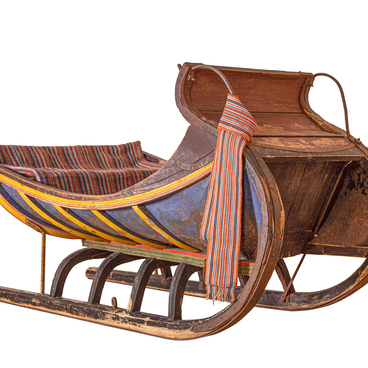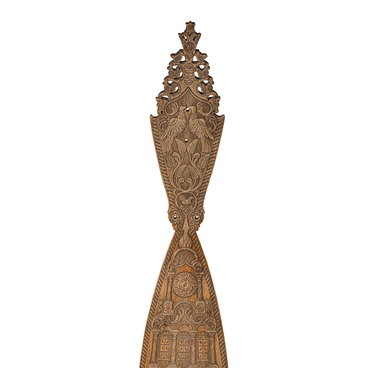Due to its strategically important location, the Trinity-St. Sergius Monastery turned into a real fortress in the 16th century. Large-scale masonry construction works began here — a reliable fortress wall with watchtowers was erected. Weapons were also sometimes delivered here. The museum staff scientists found out that the arsenal of the monastery was shown even to overseas delegations. They saw impressive stocks of weapons, including several thousand “guns large and small”, as well as “bows, arrows, swords, pistols, spears, chain mail and iron armor.”
This was the case throughout the 17th century, but at the beginning of the 18th century, everything changed. As the fortress lost its significance as a military citadel, its arsenal was treated differently. Now most of the weapons are forever lost for Sergiev Posad. Weaponry rarities by the decrees of the sovereigns were ruthlessly seized by hundreds from the monastery during the 18th-19th centuries.
Nowadays, the museum keeps only a few pieces of artillery that date back to the time of the siege of the monastery by Polish-Lithuanian invaders and Russian traitors in 1608-1610, as well as to the events of 1612 and 1618. This is a small muzzle-loading gun of the 17th century, cast from cast-iron in the Western Europe. This field gun was called in Russian sources of that time the volkoneyka or volkoneya (from the English “falconet” — “falcon”).
Volkoneykas are small guns of small caliber, which were were designed to fire a continuous cannonball at light field fortifications and enemy troops. Flat trajectory fire is defined as shooting at a small angle, when the cannonball flies almost along the surface of the earth.
Cannons of this type entered the museum in 1920 from the collection of the monastery, as they were in its service in the 17th-18th centuries. Only the cannon presented in the exhibition is a rare find of the Soviet era. It was discovered on the slope of a ravine in the Sergiev Posad district near the village of Rogachevo near the city of Krasnozavodsk in 1954. The history of this exhibit is connected with the events of the Time of Troubles: many battles of this era took place in the village of Rogachevo and the neighboring village of Svatkovo.
This was the case throughout the 17th century, but at the beginning of the 18th century, everything changed. As the fortress lost its significance as a military citadel, its arsenal was treated differently. Now most of the weapons are forever lost for Sergiev Posad. Weaponry rarities by the decrees of the sovereigns were ruthlessly seized by hundreds from the monastery during the 18th-19th centuries.
Nowadays, the museum keeps only a few pieces of artillery that date back to the time of the siege of the monastery by Polish-Lithuanian invaders and Russian traitors in 1608-1610, as well as to the events of 1612 and 1618. This is a small muzzle-loading gun of the 17th century, cast from cast-iron in the Western Europe. This field gun was called in Russian sources of that time the volkoneyka or volkoneya (from the English “falconet” — “falcon”).
Volkoneykas are small guns of small caliber, which were were designed to fire a continuous cannonball at light field fortifications and enemy troops. Flat trajectory fire is defined as shooting at a small angle, when the cannonball flies almost along the surface of the earth.
Cannons of this type entered the museum in 1920 from the collection of the monastery, as they were in its service in the 17th-18th centuries. Only the cannon presented in the exhibition is a rare find of the Soviet era. It was discovered on the slope of a ravine in the Sergiev Posad district near the village of Rogachevo near the city of Krasnozavodsk in 1954. The history of this exhibit is connected with the events of the Time of Troubles: many battles of this era took place in the village of Rogachevo and the neighboring village of Svatkovo.



